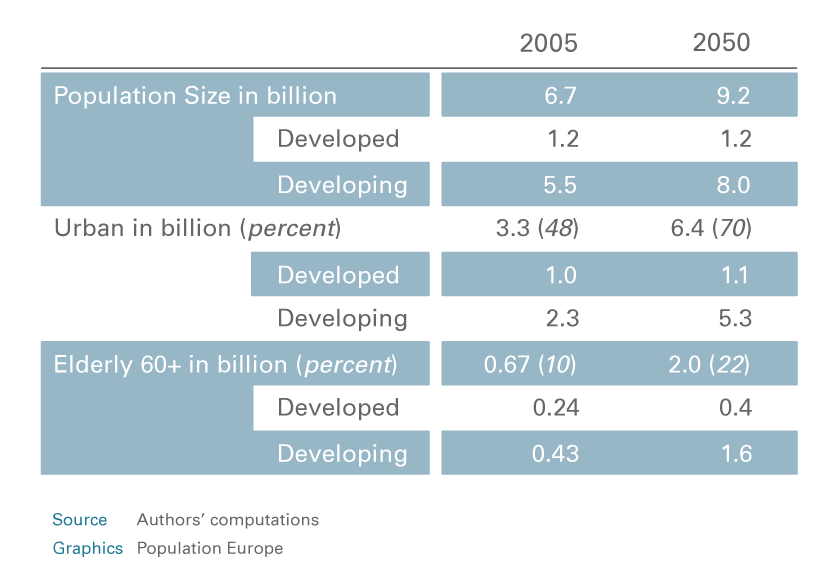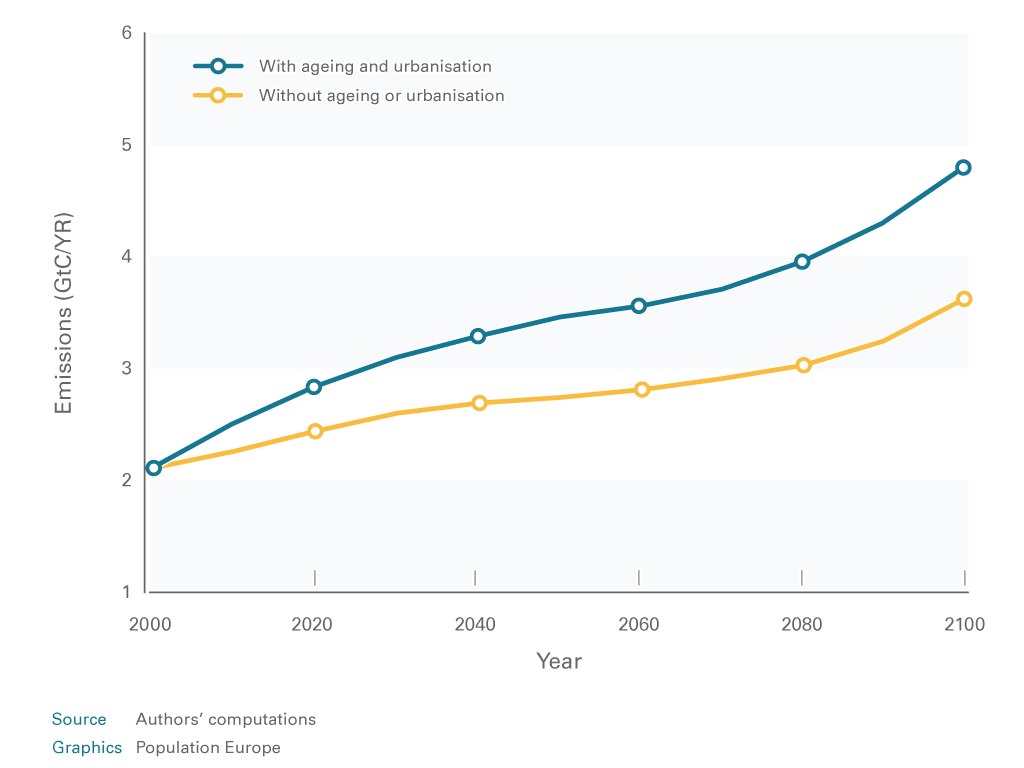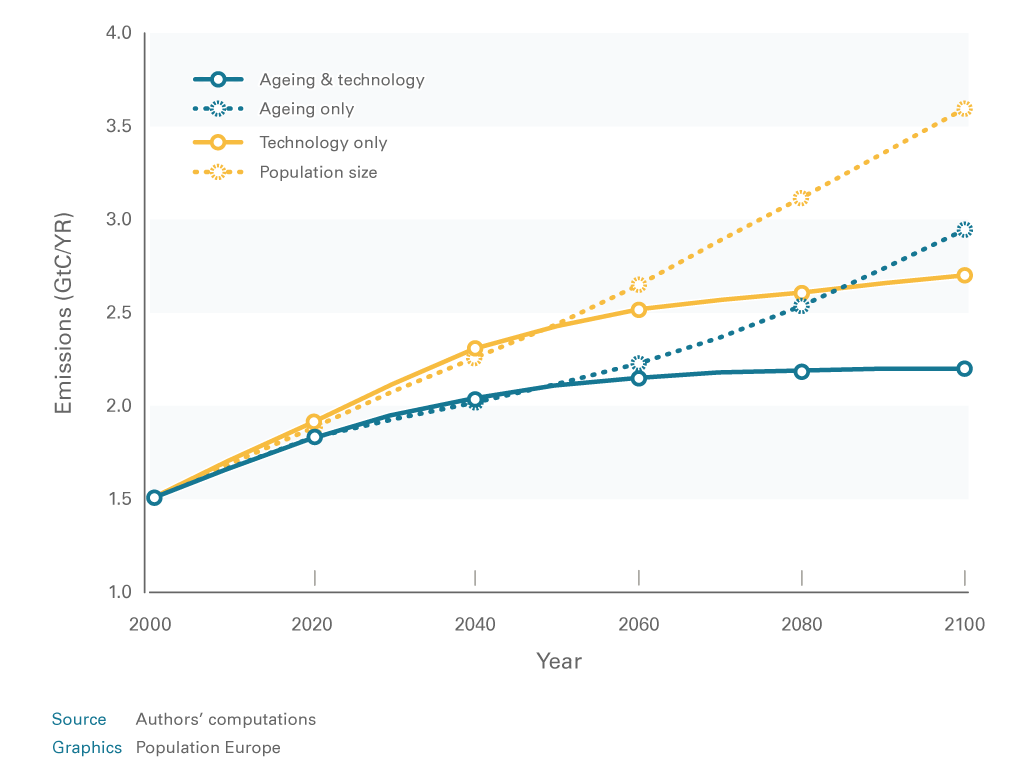Even though the intergovernmental Panel on Climate Change (IPCC) which includes more than 2500 scientists from 150 countries, is confident that population is one of the root causes of greenhouse emissions, there have only been a few studies on the actual input of population trends on climate change. Based on existing scientific evidence, Leiwen Jiang and Karen Hardee explore how demographic trends affect climate change and they try to find answers on how demographics do have an impact on both mitigation and adaptation, and they also discuss how policies could make a difference.
It’s not only size that matters
Most greenhouse effects are related to human activity. More specifically, the IPCCs Special Report on Emission Scenarios (SRES) has identified population growth, economic growth, technological change and changes in patterns of energy and land use as the major driving forces of the growth in greenhouse gas emissions. However, almost all former analysis and models consider only population size as a demographic variable. This simple conclusion results out of the assumption that each individual in a population has the same productive and consumptive behaviour. But according to Jiang and Hardee, this is inaccurate and misleading. Instead, apart from changes in population size, major demographic trends such as household shrinking, population ageing and urbanization should also be considered, when making projections about future climate change.
Urbanisation, Ageing and their aftermath
According to the United Nations recent population projects, all future population growth will occur in the developing world (Table 1). The world will also become more urban, with the urban population increasing from 48% in 2005 to 70% in 2050. Thus, almost all future population growth will occur in the urban areas of the developing world. The expected consequences of more and more people living in urbanised areas are an increase in economic scale, technical innovation, access to information, efficient land and energy use and lower fertility rates. All those issues may contribute to reducing energy consumptions and carbon emissions in the long run. On the other hand, nowadays rural people are urbanised too and their consumption patterns and lifestyle change with rising labour productivity.

Table 1: Important global demographic trends 2005-2050
Another factor, population ageing, will happen in both the developing and the developed world. It is estimated that the proportion of older people (60+) worldwide will more than double from 10% in 2005 to 22% in 2050. Changes in population age cause massive shifts in consumption behaviours and income structure. Therefore they are followed by variations in energy use and carbon emissions. For instance ageing populations may have reduced demands in terms of transportation, but they may on the other hand need and increased energy use for heating and cooling. Overall, further population ageing may reduce labour productivity and therefore energy consumption. Even though the conclusions on the effects of urbanisation and ageing on climate change are complex, a study on the combined effects on urban-rural residence and changes in household age structure in China has shown that the country’s annual carbon emissions will clearly increase (Figure 1). Those estimates are even 45% higher in 2100 than projections that do not incorporate ageing and urbanisation.

Figure 1: Impacts of urbanisation and ageing on carbon emissions in China
Similar analysis for the US suggest that under certain circumstances, the impact of population composition changes, such as ageing, on carbon emissions is even larger than that of technological changes (Figure 2).

Figure 2: Impacts of ageing and technology on carbon emissions in the US
Smaller households – higher emissions
Another issue are internal changes in population compositions. The authors suggest, that instead of only taking into account the number of individuals as a unit of consumption, it makes much more sense do work with the number of households when measuring energy consumption. Especially in the developed world, more and more households only consist of one or two persons these days, and this is not going to change: household projections for major developed and also developing countries confirm that an increased proportion of these populations will be living in smaller households. This development leads to an increase of the number of households in total. With the per capita energy consumption of smaller households being significantly higher than that of larger households this causes an increase of the total energy consumption, even though the population growth rate has slowed.
Implications of Policy Responses
Population issues should not be ignored when adapting policies and strategies on climate change. Jiang and Hardee recommend policies that provide access to contraception and family planning methods, reproductive health services, the promotion of gender equity and girls’ education. All those measures can facilitate the demographic transition in countries where there is an imbalance between demographic growth rates and social, economic and environmental goals. They can be part of a strategy for a more sustainable demographic future that will play a crucial role in climate change mitigation and adaption.
This PopDigest is also available in French, Spanish and German.
This volume has been published with financial support of the European Union in the framework of Population Europe.